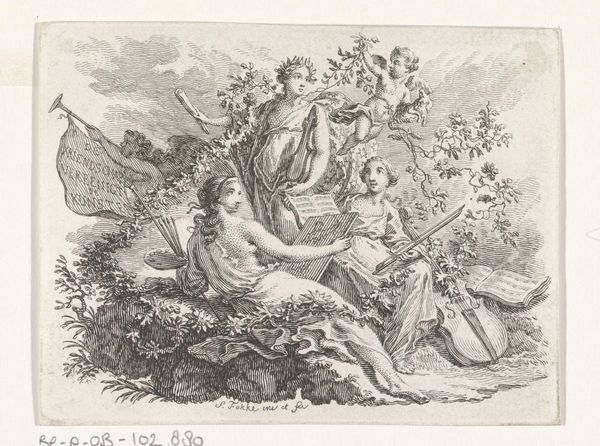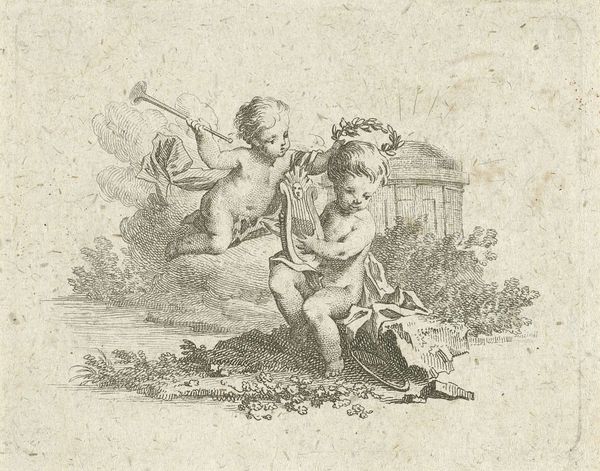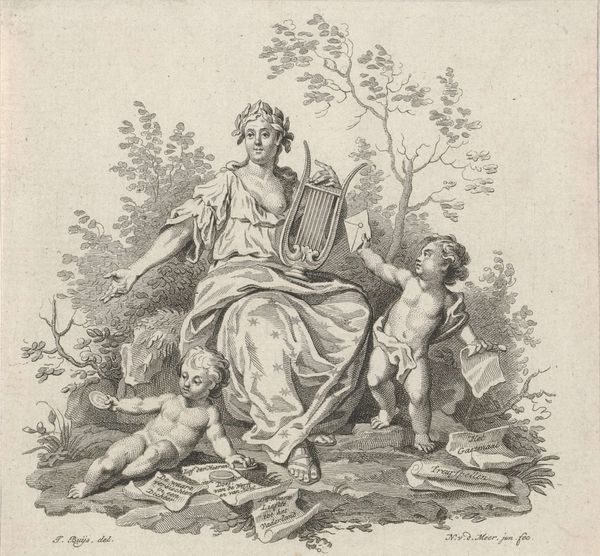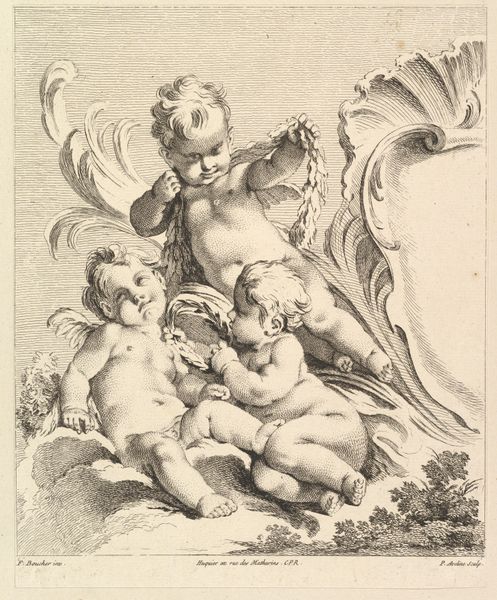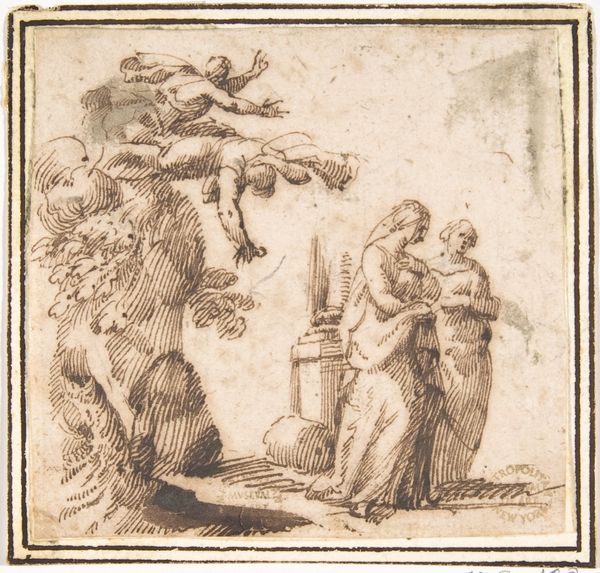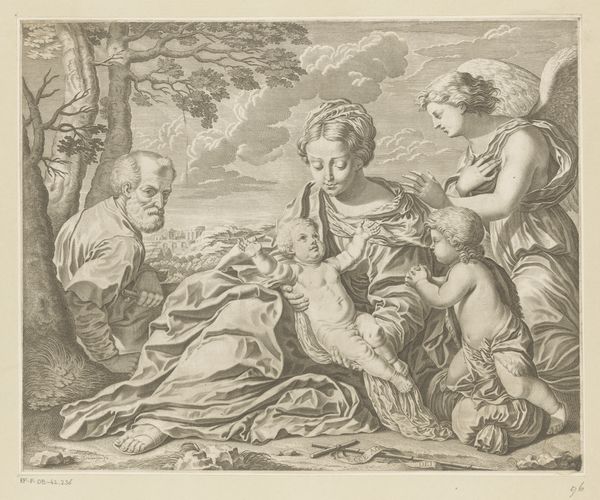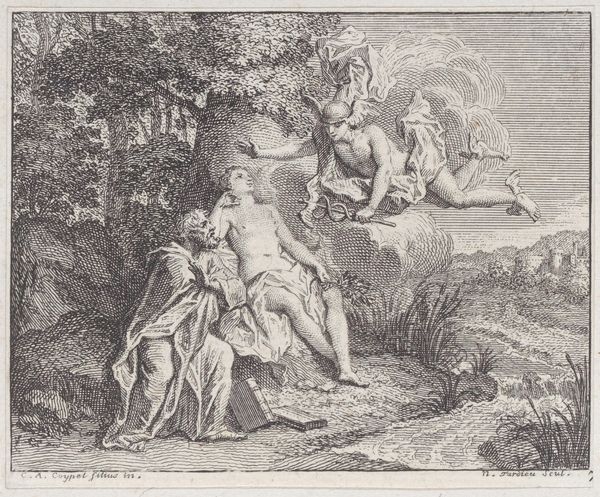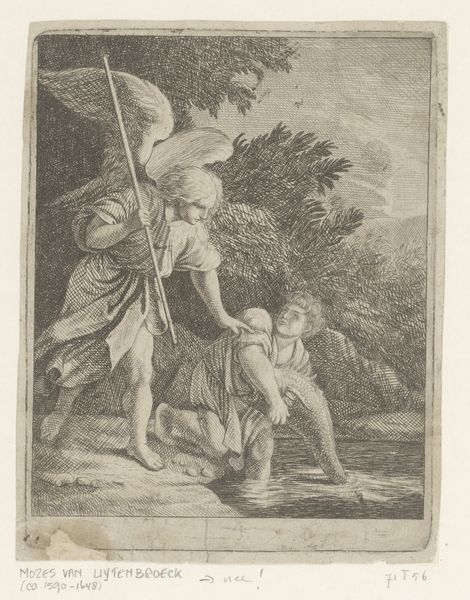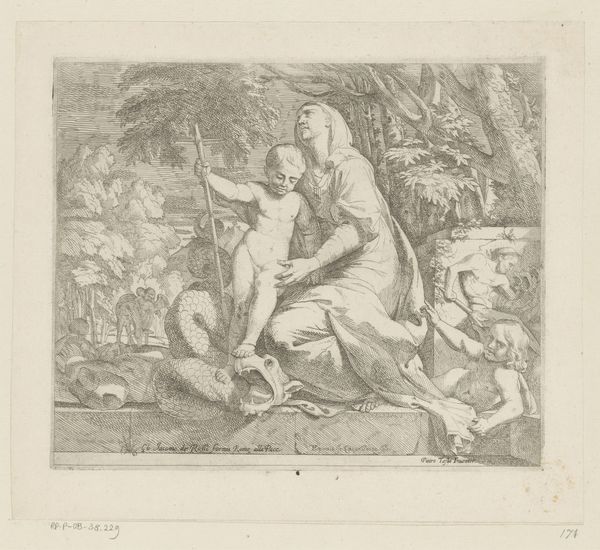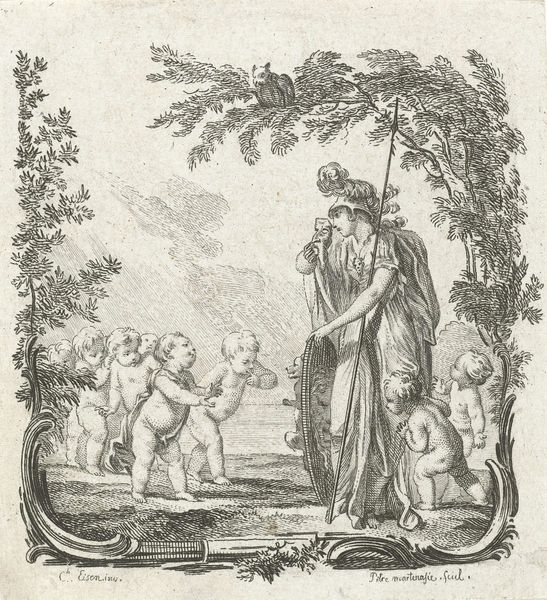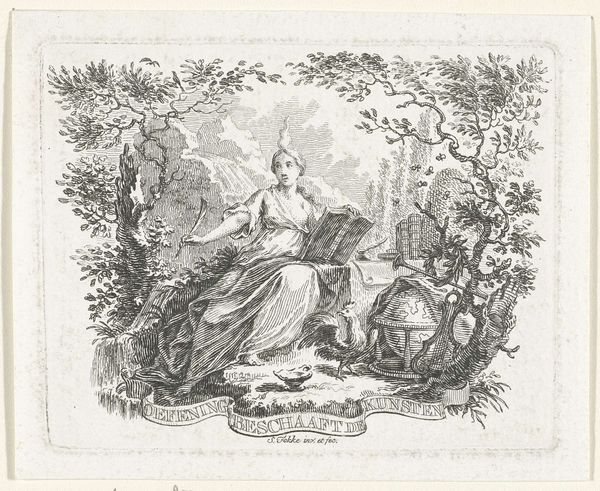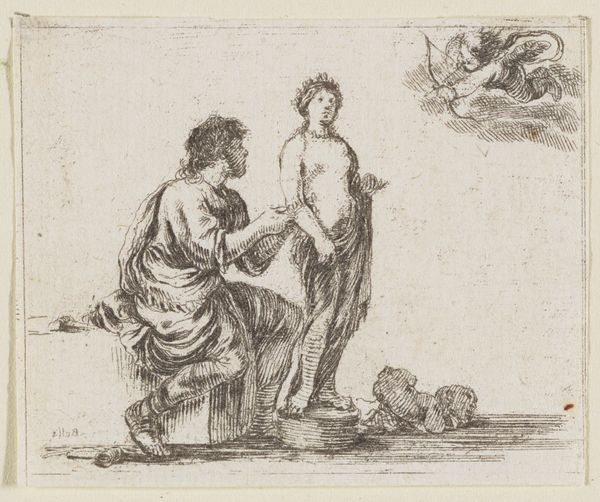
Dimensions: height 66 mm, width 81 mm
Copyright: Rijks Museum: Open Domain
Curator: This pen and engraving piece by Reinier Vinkeles, "Harpspelende vrouw en drie putti" or "Woman Playing Harp and Three Putti," created sometime between 1751 and 1816, gives off a sense of serenity, doesn't it? I find the landscape and the allegorical elements particularly captivating. What strikes you about it? Editor: Well, it's the clear depiction of labor that really catches my eye. The woman and the putti, the act of creating music... but the choice of pen and engraving feels so deliberate here, a very specific craft at play. How do you interpret the materials used within the context of its creation? Curator: That's an insightful observation. Consider the social context. During this period, the rise of printmaking democratized art, making it accessible to a wider audience. Do you see the choice of engraving – a repeatable process – as perhaps commenting on the consumption of art and ideas? It is also possible to think about labour; creating art or playing an instrument, something considered high art could also be displayed at the hand of an artisan creating copies to be distributed. Editor: That's a fascinating point. So the medium itself becomes part of the message. The work becomes a product, accessible and distributed. It changes the meaning when we realize the image could be reproduced, potentially endlessly. But if it highlights labor, wouldn't a painting highlight this better because of its unique crafting process? Curator: A painting would offer the presence of unique brushstrokes to point to the author; what is lost there, might be gained in accessibility through printing and the production of multiple copies. Is the piece merely a vehicle for displaying mythology or a mirror reflecting the societal value placed on art, labor, and accessibility during its creation? Editor: So it is like the print's mass production recontextualizes the scene depicted? This artwork as a material object allows me to understand it within society. Thanks, I will have to consider that! Curator: Absolutely! Seeing art as intrinsically linked to its materials, production, and social context can reveal a whole new dimension to its interpretation. It has been an eye opening reflection for myself too.
Comments
No comments
Be the first to comment and join the conversation on the ultimate creative platform.
